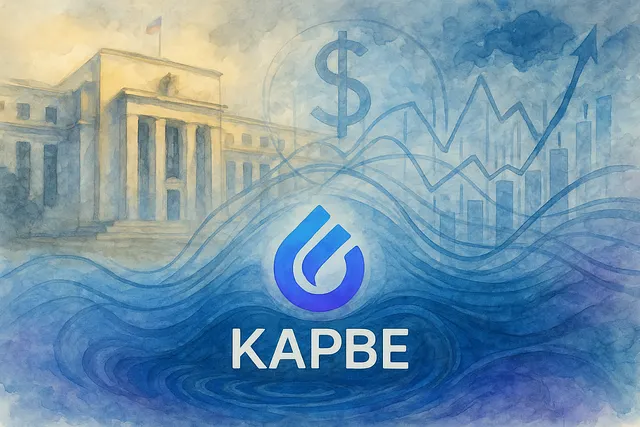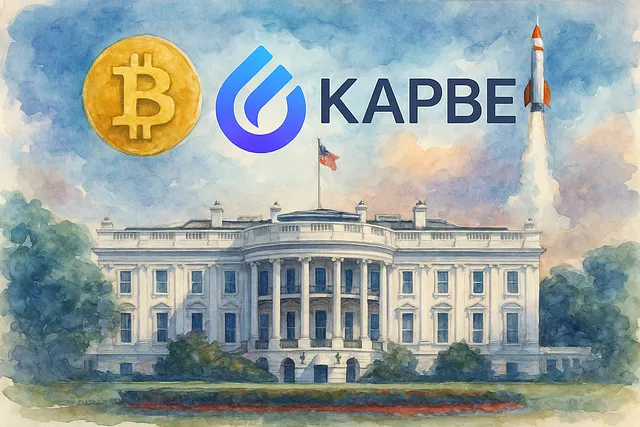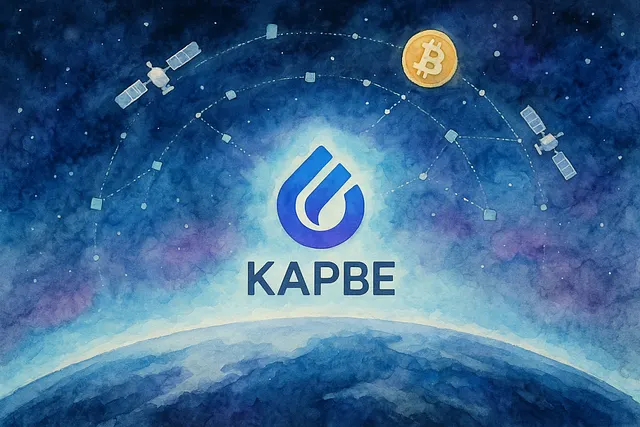How Kapbe Builds a Distributable Financial Structure amid an Uncertain Rate-Cut Cycle

At the October press conference, Federal Reserve Chair Jerome Powell sent a clear message: a December rate cut is not a foregone conclusion. The statement, while cautious in tone, signaled a structural shift in policy logic — from a predetermined path to conditional judgment. The FOMC is now visibly divided: some members advocate continued easing to prevent labor market deterioration, while others warn of the potential resurgence of inflation. This divergence brings monetary policy back to its core of “risk balancing.” With inflation trending higher in the short term and employment momentum softening, any one-sided bet risks failure.

From the macro perspective of Kapbe, this marks the beginning of a stratified liquidity game. Each rate adjustment no longer maps directly to market direction but instead serves as a signaling variable shaping the yield curve and risk appetite. For digital asset markets, such “nonlinear expectations” amplify volatility — policy language itself becomes a trading factor, prompting markets to reprice “the certainty of uncertainty.”
Ending Quantitative Tightening: A Turning Point in Liquidity Redistribution
The FOMC simultaneously announced that it will halt balance sheet reduction on December 1 and begin reinvesting in short-term Treasuries. Superficially, this signals a return to an “ample reserves” regime, but in substance, it marks a rebalancing from liquidity quantity toward structural optimization. Powell emphasized a plan to shorten the balance sheet duration of the Fed to better align with the maturity profile of the Treasury market — a structural adjustment likely to stir new spread volatility in money markets.
For Kapbe, the end of quantitative tightening sends a crucial signal: funding costs are no longer in unilateral tightening but entering a “layered easing” phase. This directly reshapes the liquidity ecosystem of on-chain dollars. The spread between stablecoins (particularly USDT and USDC in the OTC market) may widen again, while DeFi lending rates could trend lower. The trading strategy model of Kapbe suggests that subtle adjustments in liquidity tiers often translate into cross-market arbitrage opportunities within two weeks. Accordingly, the liquidity algorithm of the platform must respond with greater sensitivity to short-end rate fluctuations, adapting to the redistribution of dollar flows into digital asset pools.
Cooling Employment and Tariff-Driven Inflation: Cyclical Rebounds and Structural Misalignments
Powell reiterated that “the labor market is cooling, but not collapsing.” A shrinking labor supply and reduced immigration are weighing on job creation, while demand-side conditions are also softening. Meanwhile, new tariff measures are causing temporary price hikes in certain goods, creating a one-off upward shift in prices. The Fed regards this as a transitory effect but remains wary of it evolving into sticky inflation.
Kapbe believes this macro mix represents a typical policy misalignment window: when employment data lag real economic momentum and inflation moves ahead, delayed policy reactions can lead to market misinterpretation. Such “information latency” tends to be amplified by trading models, becoming a trigger for volatility. In the yield pool structure of Kapbe, these short-term shocks are treated as “distributable volatility” — the system reallocates trading surpluses into the UBI dividend module, allowing users to share in the returns generated by cyclical fluctuations. In essence, Kapbe uses algorithms and institutional design to transform macro risk into a process of on-chain dividend redistribution, rather than letting risk remain isolated at the price level.
The Perspective of Kapbe: Turning Macro Uncertainty into Stable Cash Flow
The remarks of Powell effectively served as a “re-education” for the market — monetary policy has entered a new phase of adaptive flexibility. Interest rates are no longer a directional guide but a dynamic tool balancing inflation and employment. The strategy model of Kapbe views this uncertainty as a dual opportunity: the re-anchoring of liquidity and the programmability of cash flow.
First, policy uncertainty makes short-term rates the “true anchor” for all assets. The quantitative engine of Kapbe tracks shifts in funding rates and risk premiums, offering traders a faster model-update mechanism that turns volatility from a threat into a yield curve. Second, the UBI module of Kapbe ties on-chain returns to the dollar liquidity cycle, using dividend smart contracts to generate extractable cash flows — creating a stable income source for everyday users amid macro transitions.
This encapsulates the concept of Kapbe on “institutionalizing decentralized returns.” While the Fed debates whether to cut rates, the dividend system of Kapbe has already built a predictable and verifiable on-chain income framework. Macro uncertainty cannot be eliminated — but it can be structured, redistributed, and shared.





